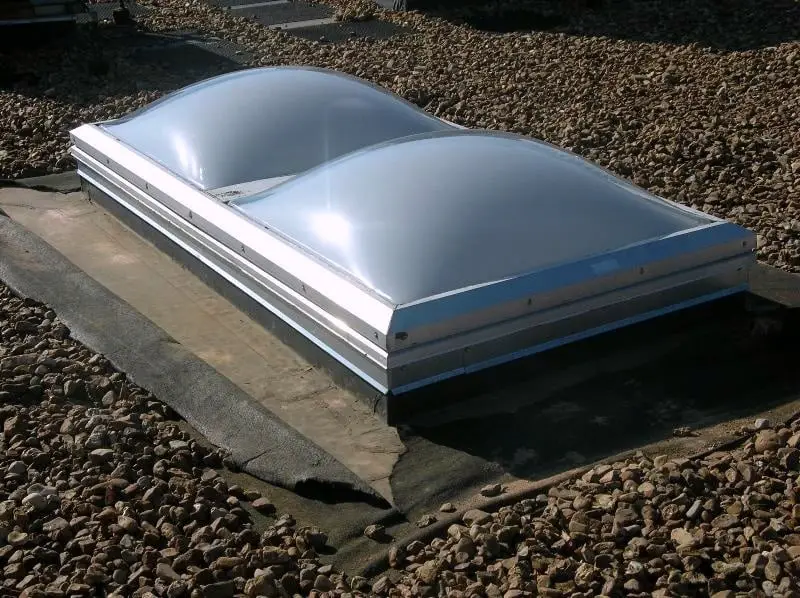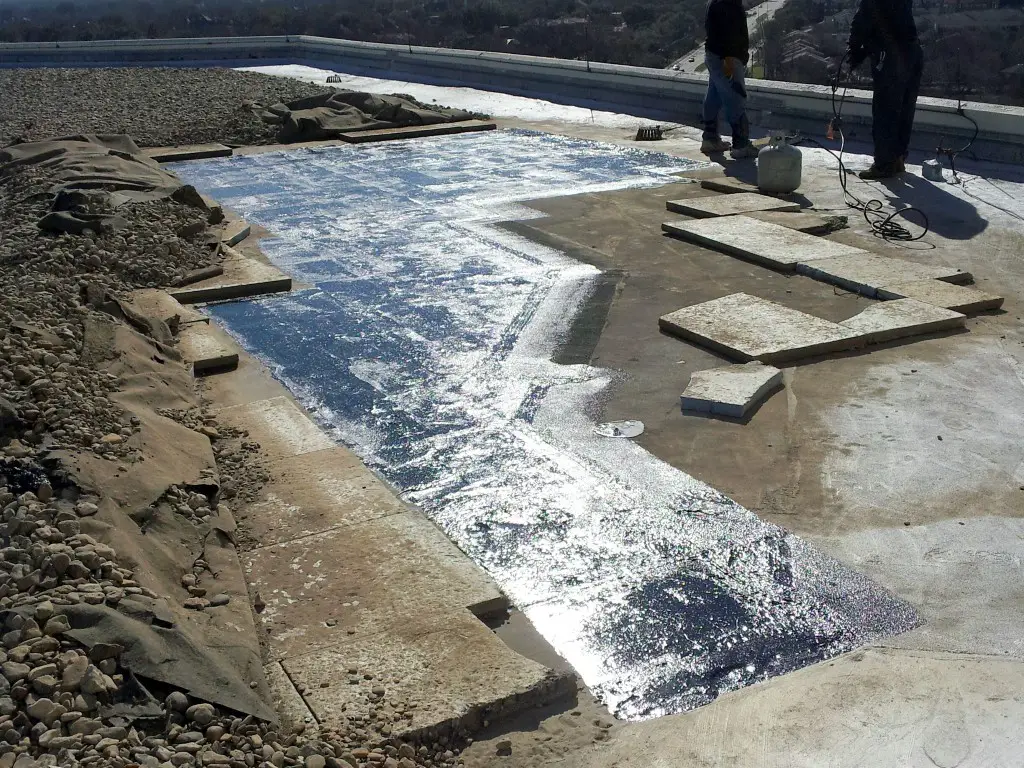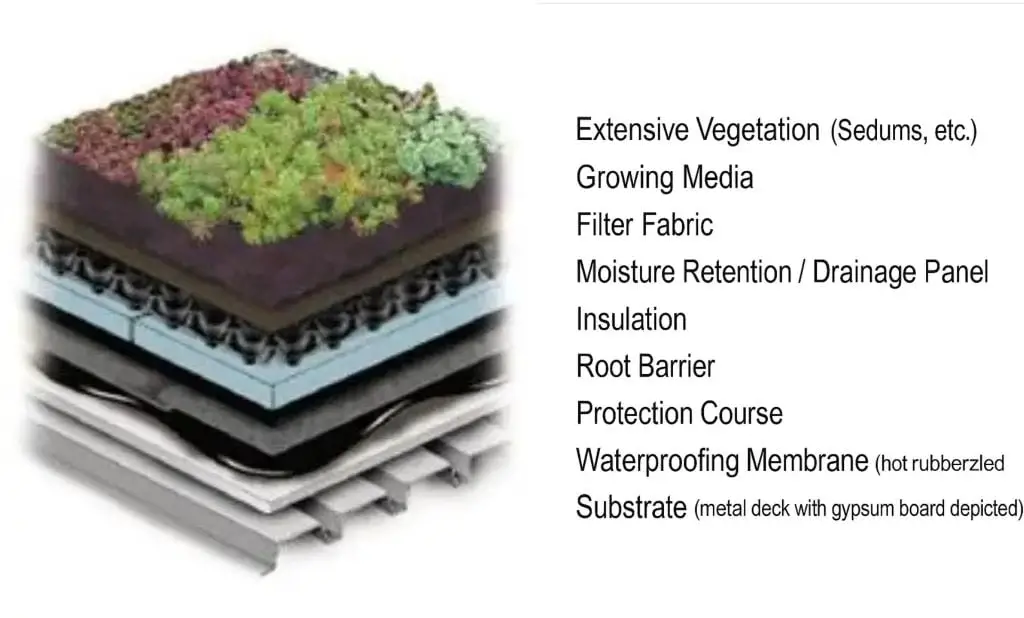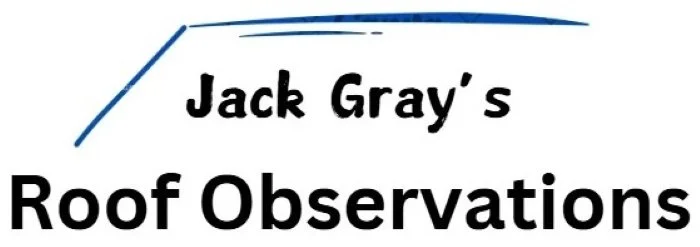Table of Contents

Geotextiles: Introduction
Geotextiles are permeable synthetic fabrics used in a wide range of construction, civil engineering, and landscaping applications. Commonly made from durable polymers like polypropylene or polyester, geotextiles are engineered to serve one or more of the following functions: separation, reinforcement, filtration, and drainage.
Originally developed for large-scale infrastructure projects such as roadways, retaining walls, and embankments, geotextiles are now also widely used in roofing, sitework, and stormwater management systems. Their ability to stabilize materials, prevent erosion, and facilitate water flow without allowing soil or debris to pass through makes them ideal for conditions where long-term durability and consistent performance are required.
There are two primary categories of geotextiles:
- Woven geotextiles are produced by interlacing continuous synthetic filaments in a structured pattern. This creates a strong, load-bearing fabric with high tensile strength, making it ideal for soil stabilization and reinforcement applications such as slope retention or subgrade support.
- Non-woven geotextiles are made from shorter synthetic fibers that are bonded together mechanically (needle-punched), thermally, or chemically. These fabrics are generally more porous and are preferred when filtration or drainage is the primary goal—for example, when preventing soil particles from clogging drainage layers.
Both woven and non-woven geotextiles are manufactured in a variety of weights, thicknesses, and roll sizes to accommodate the specific demands of different job sites. The choice between them depends on the primary function needed, the type of substrate or material being used, and the expected load and environmental exposure.
Specific Uses for Geotextiles
Geotextiles serve a variety of critical functions in construction and site development, including in some roofing systems. Their engineered properties allow them to provide long-term performance in challenging environments. Key applications include:
- Separation: Geotextiles are placed between dissimilar materials such as subgrade soil and aggregates like gravel or crushed stone to prevent intermixing. This preserves the integrity of each layer and ensures that load-bearing and drainage systems perform as designed. For example, they may be used beneath ballast layers on plaza decks or under pavers in rooftop amenity spaces.
- Filtration: When installed adjacent to drainage systems such as underdrains, French drains, or drainage mats, geotextiles act as filters. They allow water to pass through while retaining fine soil particles, helping prevent clogs in piping and reducing the risk of system failure. This is especially useful in vegetative roof assemblies or green infrastructure installations.
- Drainage: Geotextiles enhance the function of drainage systems by acting as a permeable medium that conveys water away from structures or roof assemblies. In some cases, they are used in combination with synthetic drainage boards or mats to help maintain dry conditions and prevent hydrostatic pressure buildup.
- Reinforcement: Woven geotextiles can add structural strength to retaining walls, embankments, and slopes by distributing loads and reducing soil movement. This application is especially relevant for projects involving steep grade transitions near rooftop access points or around below-grade waterproofing.
- Artificial Turf Systems: In turf installations, both on the ground and on rooftop recreation areas, geotextiles are often used to separate the turf base from the sub-base and to facilitate drainage. They also act as a barrier to inhibit the growth of weeds or unwanted vegetation beneath the turf layer.
Filter Fabric and Roofing
In roofing applications, geotextiles are most often referred to as filter fabric. These permeable fabrics are used as protective and functional layers within various roofing assemblies, particularly where ballast, vegetation, or drainage components are involved.
One of the primary uses of filter fabric in roofing is to act as a buffer layer, protecting the waterproofing membrane from mechanical damage caused by the sharp edges of ballast stone or other overburden materials. This is especially important in re-roofing or retrofitting scenarios where aged stone ballast may be reused.
Filter fabric also plays a key role in inverted roof membrane assemblies (IRMAs), also known as protected membrane roof (PMR) systems, where it is installed above the rigid insulation and beneath the ballast. In this configuration, the fabric serves to:
- Separate the ballast from the insulation layer
- Hold the ballast in place during wind events or construction
- Prevent fine particles from clogging drainage paths between and below insulation boards

Vegetative Roof Systems
The most common and critical use of filter fabric in modern roofing is in green roof systems (also called vegetative roof systems), where it performs multiple essential functions within the assembly:
- Drainage Protection: Filter fabric is laid over drainage boards or mats to allow water to pass through while keeping fine soil particles and organic matter from clogging the system. This maintains proper drainage flow and prevents ponding or water retention that could compromise the roof structure.
- Root Barrier: In some assemblies, specialized filter fabrics also serve as root barriers, preventing plant roots from penetrating the underlying roofing membrane or waterproofing layer. This protects the integrity of the waterproofing and extends the service life of the system.
- Soil Stabilization: Filter fabric helps hold the growing medium in place by preventing erosion, particularly on sloped green roofs or areas subject to wind uplift. It also reduces the migration of soil fines into adjacent drainage layers.
- Moisture Retention: Some types of non-woven filter fabric can help retain moisture within the growing medium, creating a more consistent root-zone environment and reducing the frequency of irrigation needed in drought-tolerant green roof systems.
The correct selection and placement of filter fabric is essential to the performance of both conventional and vegetative roof assemblies. It must be compatible with the roofing components, chemically stable in wet and alkaline environments, and resistant to degradation from UV exposure if temporarily exposed during installation.

References for Filter Fabric Information
1. General: For a quick overview of filter fabrics/geotextiles see this Wikipedia page. Not really anything here about the function of filter fabrics in roof construction, but it does explain what they are.
2. General: Geosynthetics Magazine: an online magazine with information and news about geotextiles and other geosynthetic products.
3. General: The Geosynthetic Materials Association (GMA) provides engineering support, business development opportunities, educational programming, government relations expertise and industry recognition.
4. General: The International Geosynthetics Society (IGS) is a learned society dedicated to the scientific and engineering development of geotextiles, geomembranes, related products, and associated technologies.
5. General: International Journal of Geosynthetics and Ground Engineering – This journal presents the highest quality fundamental and applied research on all aspects of geosynthetics and their applications.
6: General: The Geosynthetic Institute (GSI) is a consortium of organizations interested in, and involved with, geosynthetics. All types of polymeric geosynthetic materials are involved: geotextiles, geomembranes, geogrids, geonets, geocomposites, geosynthetic clay liners, geopipe, geocells, and geofoam.
7. Technical: See “Protected Membrane Roof Systems” at Buildings.com for an explanation of filter fabric’s role in protected membrane roof (PMR) or inverted roof membrane assembly (IRMA) roofs.
8. Technical: For a quick visualization, InterNACHI shows how filter fabric fits into a protected membrane roof.
9. Technical: See how filter fabric fits into a vegetative roof assembly (often called a “green roof”) on the Whole Building Design Guide site.
